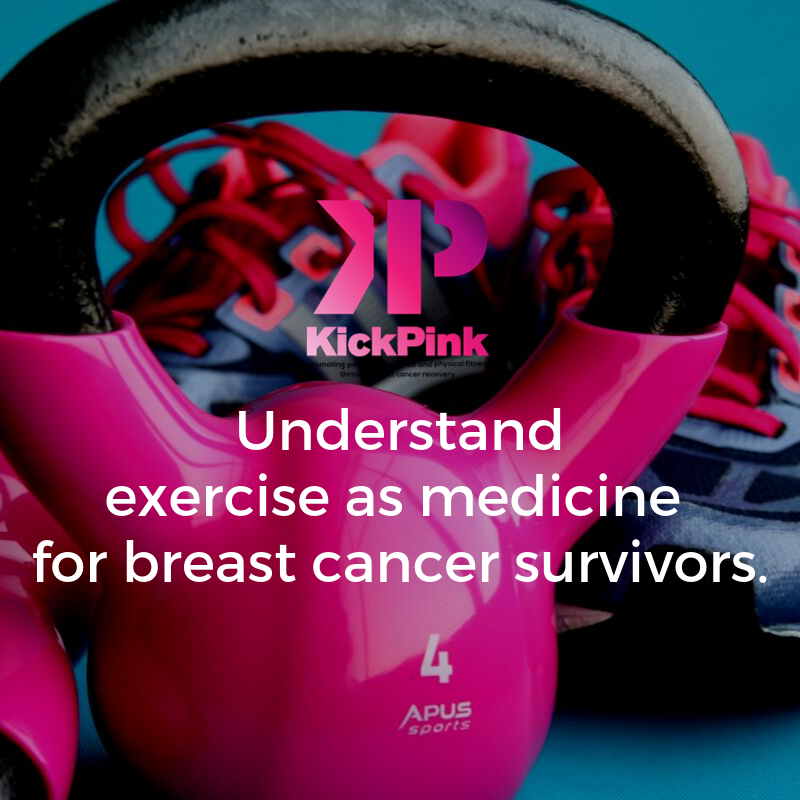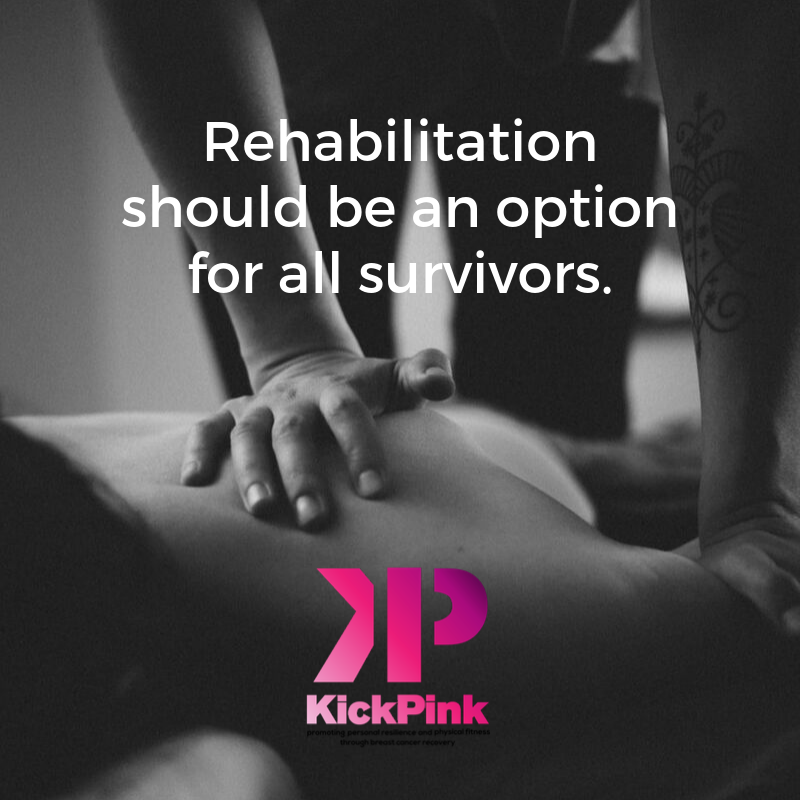Physical Therapy Can Help Side Effects of Breast Cancer Treatment
The following scenarios are based on real survivor experiences…
Tina looked on the positive side and saw breast reconstruction as a ‘perk’ of getting breast cancer…she had no idea that it would be the most painful part of her treatment. The pain was present after mastectomy, intensified with expander inflation, and did not go away with implant placement.
No one could tell Rebecca what was limiting her shoulder motion and causing her so much pain. Traditional therapy didn’t work. Paddling was the one thing that made her forget that she had cancer, but now, she couldn’t do it anymore.
It had been 10 years since Deborah was able to have sex with her partner; she found her low libido during treatment understandable, but expected to reconnect with her lover and make a full bedroom comeback in recovery. 10 years later though, because of pain, intimacy was not possible (despite the estrogen cream she did not want to take).
What happened?! What was the problem?
Tina had post-mastectomy pain syndrome. Gentle manual therapy called myofascial release, rib mobilizations, breath work and education in brain-pain neuroscience helped get rid of Tina’s pain. She wished she had found her physical therapist sooner as one year after surgery Tina began to feel like her providers thought she was crazy. She felt like a lost cause.
Rebecca had lymphatic cording. Most of her pain and lack of shoulder range of motion resolved within 1 manual therapy treatment session. She returned for two quick follow-up appointments. Rebecca was amazed that one brief (although uncomfortable) manual therapy technique could take care of her problem! She was also upset that no one could diagnose it and treat it sooner! Without paddling, Rebecca sank into depression. She also knew how important physical activity was for her mental health and preventing recurrence.
Deborah had pelvic floor dysfunction. The estrogen cream wasn’t working because although she did have vulvar atrophy, Deborah had an overactive pelvic floor (common secondary to stress and muscle guarding) as well as an angry obturator internus muscle after hip replacement. Within a month Deborah was having pleasurable intercourse with her partner again. What if she hadn’t discovered physical therapy?
What other side effects are rarely discussed/considered?
Many breast cancer survivors understand that exercise can decrease their chances of recurrence and jump into rigorous exercise. I LOVE exercise, however, understanding risk factors and parameters for activity with high-risk or existing conditions is essential! Movement is empowering & should be used as medicine…in order for that to happen though, therapists, trainers & physicians need to be able to reason through treatment side effects, prevention and activity modification so as not to incite an issue.
Osteopenia/porosis (bone thinning): Certain surgeries, hormone therapies and even radiation therapy can cause bone thinning; furthermore, when layered or done in conjunction with one another, can pose an even greater risk for fracture.
Heart dysfunction: Certain chemotherapeutic drugs can cause acute changes in heart function or crop up years later. Many people are not aware when they have an arrhythmia or ignore shortness of breath thinking is anxiety-related or from being ‘out of shape.’ Radiation treatment within the field of the cardiac muscle could also predispose a person to heart dysfunction.
Disrupted balance - Chemotherapy can affect the peripheral nervous system in a myriad of ways causing symptoms from numbness, to hypersensitivity and muscle weakness. Fear of falling is often unaddressed and prevents movement and exercise.
Lymphedema: Arm swelling is one of the most well-known and feared side effects of breast cancer treatment. Some survivors are still being taught restrictive guidelines such as not to wear a purse over the affected shoulder while others are told “lymphedema doesn’t happen to my patients” and engage in aggressive exercise too quickly. Weighing individual risk factors and progressive activity is a more balanced approach.
Fatigue is one of the longest lasting side effects after treatment ends and happens to about 90% of survivors. Guess what the #1 treatment is for fatigue? Yes, EXERCISE! But, prescription and progression is unique for everyone.
Core compromise: Brachial plexopathy and muscle weakness are inherent risks of mastectomy, node dissection, and reconstruction. Trained rehabilitation practitioners can not only treat these problems, but we also alleviate connective tissue restrictions that cause pain and limit aesthetics outcomes.
Help me get this education into the hands of survivors… after all, they are their own best advocates.
DONATE to KickPink!
What does the research say about side effects?
According to The Pulling Through Study 60% of breast cancer survivors will experience a side effect of treatment that is amenable to rehabilitation… that means that the majority of survivors will be affected by an adverse side effect!
The following incidence rates have been reported: (Schmitz et al, 2012)
Lymphedema: 6-70% (high variation in incidence rates due to varied classifications of lymphedema)
Upper quadrant dysfunction: 20-44%
Chemotherapy-induced peripheral neuropathy due to taxanes: 83%
Arthralgia and joint pain due to aromatase inhibitors: 36%
Fatigue: 94%
Vertebral fractures: 5 x more likely
And this doesn’t even cover all of the side effects!
Can any physical therapist address my issues?
It is best to find a physical therapist who understands how to treat the comprehensive side effects of breast cancer. With that being said, not all practitioners have the same skill-set. Some lymphedema therapists are great at treating swelling and less versed at progressive exercise. Some orthopedic therapists are very good at progressive exercise, but need to understand contraindications for certain manual therapy techniques and precautions for strengthening after surgery. It is important to do some detective work to find a provider who is versed in treating these side effects comprehensively, and truthfully, they can be hard to find.
In my online KickPink Practitioner Certification course, “Breast Cancer Rehabilitation: Comprehensive Evaluation & Treatment,” I teach practitioners about how to assess, prevent, and alleviate all of these side effects.
How effective is rehabilitation at preventing and alleviating these side effects?
The sooner someone finds a skilled rehabilitation practitioner the better; the incidence of post-op shoulder impairments after one year decreased from 24% without rehabilitation to 4% with the prospective surveillance model (Yang et al, 2010 & Springer et al 2010). The incidence of stage 2 lymphedema decreased from 33-48% without intervention to 2% with early intervention (Stout et al, 2012)!
I tend to promote early intervention which is a model of care called prospective surveillance.
If this is the case, why don’t more people receive early intervention?
That is a great, loaded question!
Next week we will be addressing Barriers and Solutions to Rehabilitation for Breast Cancer Patients…thanks for tuning in!
Author: Susannah Haarmann, PT, WCS, CLT
Susannah Haarmann is a physical therapist specializing in pelvic health and breast cancer rehab in Asheville, NC. She created the first comprehensive course in rehabilitation for breast cancer patients and has published “The Breast Bundle;” a collection of patient education handouts for practitioners to use in the clinic. Susannah is the founder of KickPink; an online platform providing empwering education and uplifting community to breast cancer survivors.
References:
Schmitz, K. H., Speck, R. M., Rye, S. A., DiSipio, T. and Hayes, S. C. (2012), Prevalence of breast cancer treatment sequelae over 6 years of follow‐up. Cancer, 118: 2217-2225. doi:10.1002/cncr.27474
Schmitz, K., Stout, N., Andrews, K., Binkley, J., Smith, R., Prospective evaluation of physical rehabilitation needs in breast cancer survivors. Cancer, 2012; 118 (8) 2187-2190.
Stout, N., Binkley, J., Schmitz, K., et al, A prospective surveillance model for rehabilitation for women with breast cancer. Cancer, 2012; 118 (8) 2191-2200.



